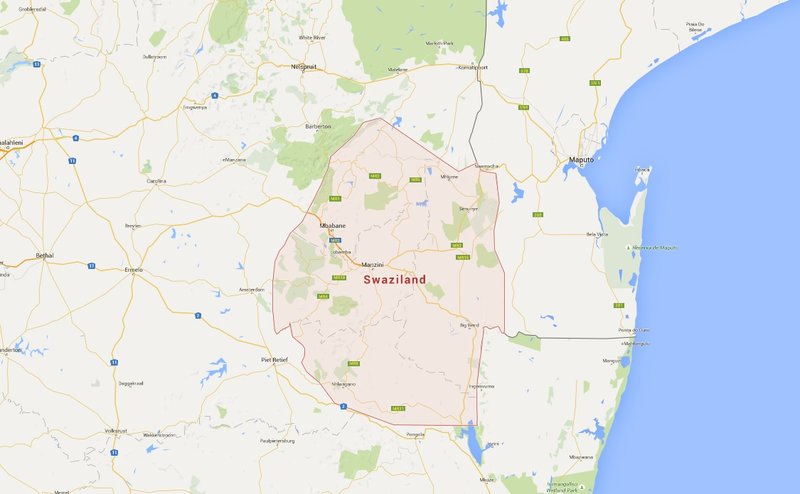Swazi international airport still a white elephant
Updated | By ANA
A year and a half after Swaziland’s monarch dedicated Swaziland’s controversial airport and named it after himself, the King Mswati III International Airport has become a white elephant.

“The KM3 Airport was built on the instructions of the king without benefit of a needs analysis. It has proved to be a disaster since it was formally opened in March 2014. Only one airline uses the airport, and that is partly owned by Swaziland,” wrote former University of Swaziland professor Richard Rooney on his website.
His post summed up the view of many critics about an airport that cost R2,5 billion to build amid dire poverty in the country.
The Swaziland Civil Aviation Authority (SWACAA), which runs the airport, estimated at KM3’s opening that 300,000 passengers yearly would be required for the investment to break even.
KM3 is located only 40 minutes by air from Johannesburg International Airport. Maputo’s airport is minutes away, as is Mpumalanga’s airport at Nelspruit. Several international flights already service Durban nearby to the south.
Only one airline uses KM3, Swaziland Airlink, which is partly owned by the Swazi government. Its Embraer J135 aircraft can carry 50 passengers, so its three daily flights between Manzini and Johannesburg can bring a maximum of 150 travellers to the airport.
The Swaziland Tourism Authority reported this week that about 450 travellers used KM3 during last week’s four day-long Reed Dance weekend. That averaged 112 passengers a day at a time when the country’s top tourism attraction was underway.
But government seems to have taken the stance that by declaring the airport a success, this will be taken as fact. For its first year of operation, KM3 passenger numbers approximated those of the airport at the Matsapha Industrial Estate outside Manzini, which the new airport replaced.
About 70,000 passengers used KM3, the same number as Matsapha the year before. Airport supporters blamed the lack of a passenger drop-off at the new airport for the relatively low numbers.
Airport doubters noted that from Mbabane it is quicker and considerably cheaper to drive to Johannesburg than travel to KM3 and fly the short distance. While passenger numbers have remained consistent with those of the Matsapha airport, they are less than a quarter of what is required for KM3 to break even.
“If you listen to sceptics you can never achieve anything,” Gideon Dlamini, Minister of Commerce and Industry, told the Swazi Observer newspaper this week.
Declaring the airport a success, Dlamini said: “But we went ahead and built the airport which today is the country’s pride and is functioning properly and is world class.”
Last year SWACAA announced that because so few passengers make Swaziland their destination, the KM3 airport would only be profitable if turned into a regional air hub to rival Johannesburg.
SWACAA reported that a new national airline was being planned to ferry passengers arriving on long-haul flights from Europe, the Middle East and Asia, to other countries in Africa. No international air carriers signed on to the plan, and nothing further has been heard about the national airline.
The legacy of King Mswati’s airport could well be even more costly and gargantuan projects. Boosted by the success of the airport, as they see it, government has announced its intention to undertake another major project, a R30 billion canal and inland seaport for the landlocked country.
Though this project seems technically impossible, there is some danger that the government might spend a lot of very scarce public resources before it reaches that conclusion.
Show's Stories
-
This will raise some eyebrows! Lady messes up her brows
DIY beauty hacks can be amazing... well, usually.
The Workzone with Elana Afrika-Bredenkamp an hour ago -
Are you on board for a Nude Cruise set to sail in 2025
Calling all nudists, your mother ship has arrived, but it's in Miami, USA.
The Workzone with Elana Afrika-Bredenkamp an hour ago